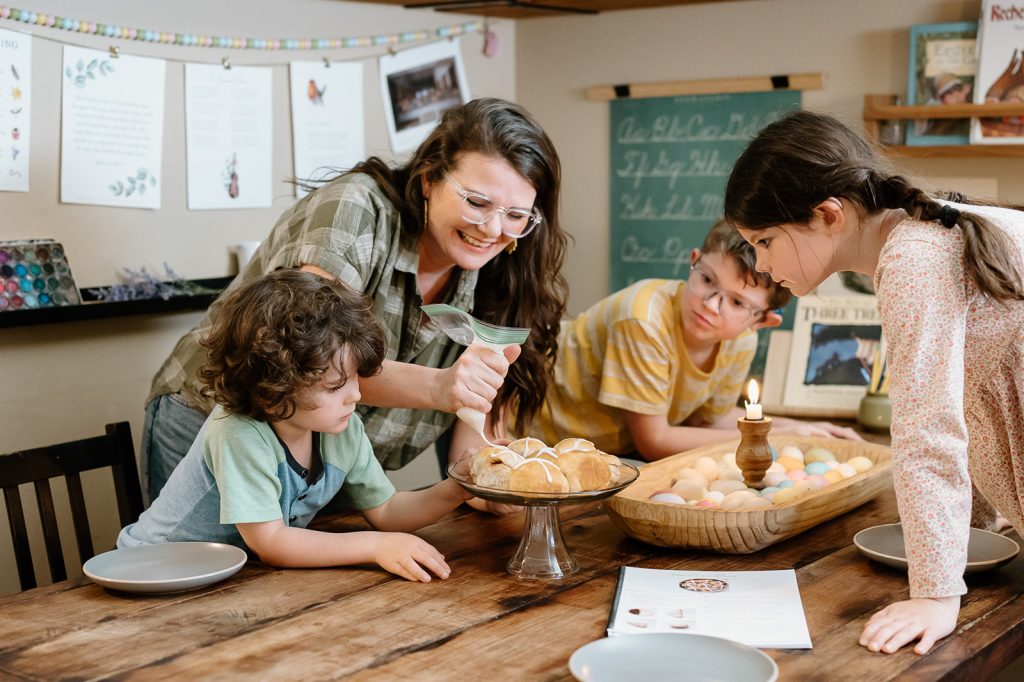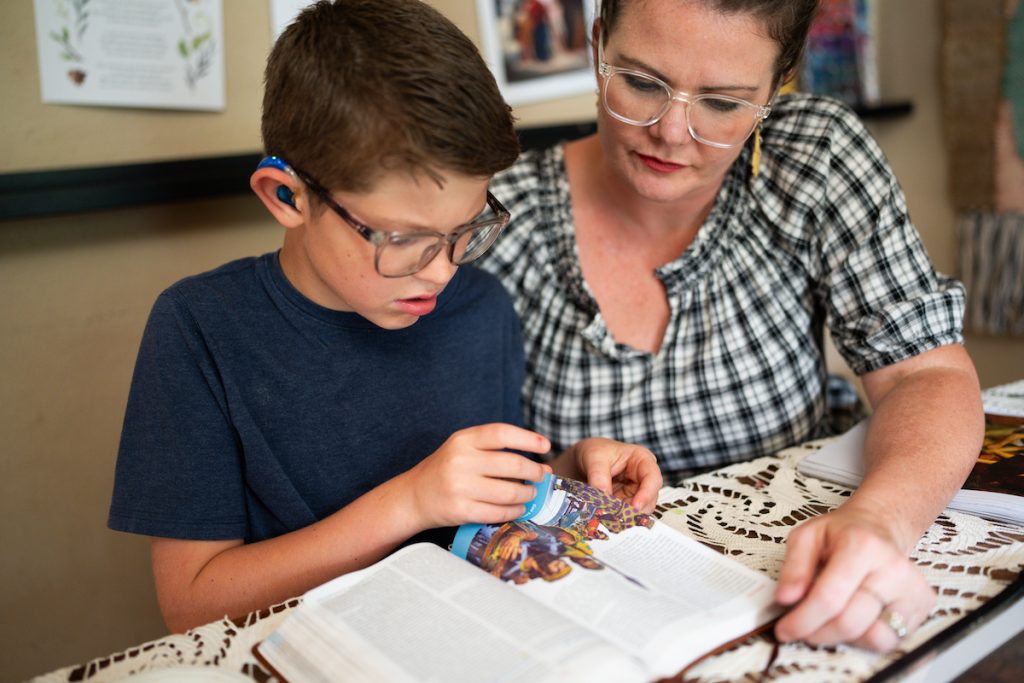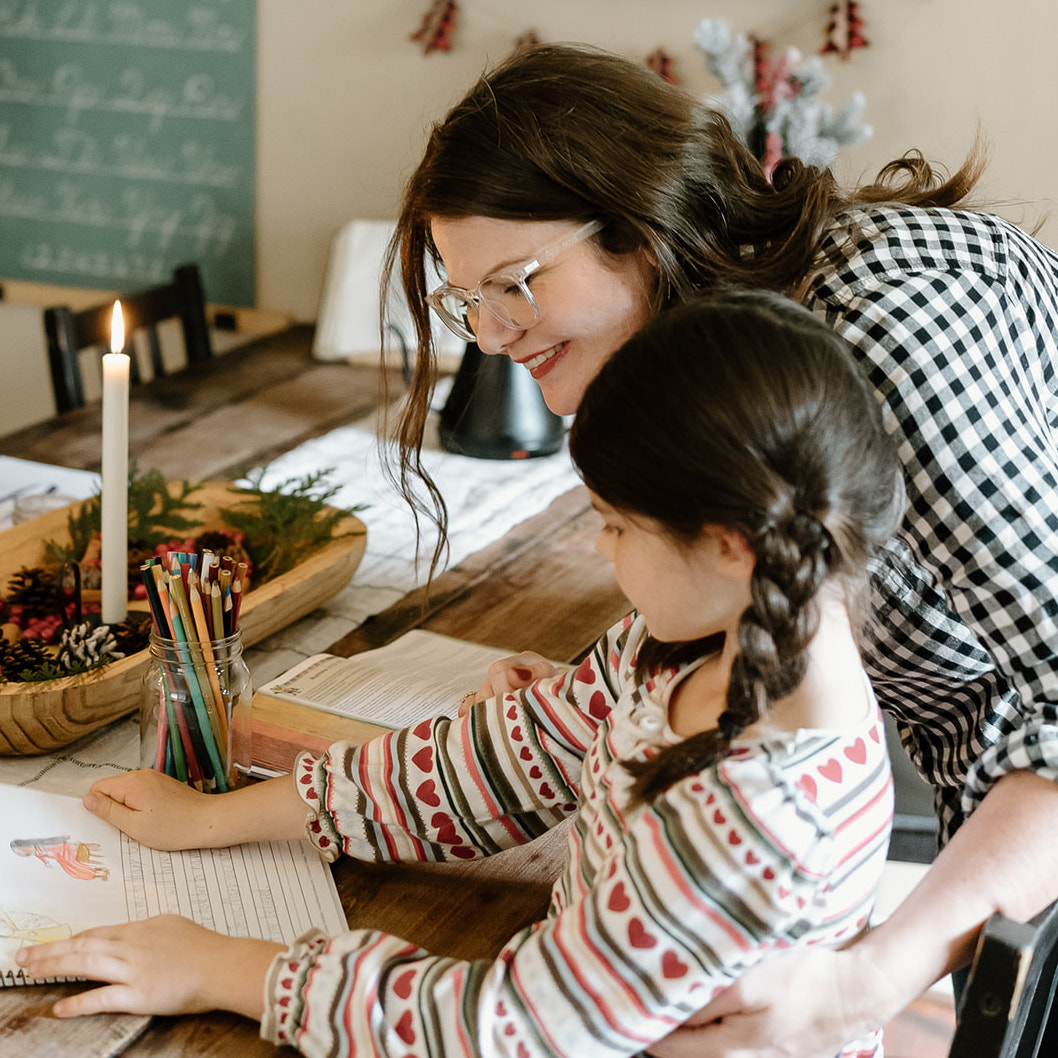An Expectant Easter is a gospel-centered, Charlotte Mason-inspired curriculum designed with your whole family in mind. It’s an invitation to gather your family to center your hearts on what Easter is all about.
Through Bible stories, hymns, poetry, art studies, picture books, projects, baking, tea time, and nature studies, your family will spend three weeks connecting together and focusing on the newness of spring, the sacrifice that Jesus made, and the power of his resurrection.
In this blog post I am sharing all about An Expectant Easter and what a week of this study looks like.
In this blog post:
- Core values of An Expectant Easter
- Reading and narrating Scripture in An Expectant Easter
- Reading meaningful Easter books with An Expectant Easter
- Memorizing and copying Scripture in An Expectant Easter
- Poetry in An Expectant Easter
- Worshipping with hymns in An Expectant Easter
- Art study in An Expectant Easter
- Hunting for Bible story clues
- Connecting over baking and crafts
- Nature study in An Expectant Easter
- Intentional Bible curriculum from Treehouse Schoolhouse
Core values of An Expectant Easter

The core values of An Expectant Easter are Biblical truth, family connection, beauty and goodness, living books, narration and notebooking, hands-on leaning, and observing and studying art.
As a family, you will live out these core values during this Easter season to more fully experience the grace and goodness of the Gospel story. Here is what a week of An Expectant Easter would look like in your family.
Reading and narrating Scripture in An Expectant Easter
Each day the foundation of your lesson time will include reading a passage of scripture to your children. These passages will be studied in chronological order to complete the crucifixion and resurrection story by the end of the study. After the reading your child will orally narrate the story and then complete a written narration and illustration. By the end, children will complete a Narration Notebook with written summaries and illustrations for each reading. This is a wonderful opportunity to open your Bibles as a family and share the gospel with your children.
Here are some ideas for reading Scripture with different ages:
- Level 1 (preschool-kinder): Read the passage to your child or summarize it for very young learners. As your child orally shares their narration, help them form them into complete sentences and write them down on their page for them. Guide your child in creating illustrations that express the sentences. Here is a helpful blog post for narration for the early years.
- Level 2 (early elementary): Read the passage to your child and ask your child to orally narrate what they remember, with a focus on the sequence and accurate details. You may require a certain number of sentences for the child to complete. As they speak, write the sentences on lined paper. Have the child copy the sentences on their notebook page, expecting excellence in handwriting as they copy. Guide your child in creating illustrations that express the sentences.
- Level 3 (upper elementary): Read the passage to your child and ask your child to orally narrate what they remember, with a focus on the sequence and accurate details. You may require a certain number of sentences for the child to complete. Ask them to write the sentences on the lines on their notebook page, expecting excellence in spelling, handwriting, and grammar. Another option is to have them write on a separate notebook paper with smaller lines and complete their illustration on a blank sheet of paper.
- Level 4 (middle school): Read the passage to your child or require them to read it independently. Ask your child to orally narrate, with a focus on the sequence and accurate details. You may require multiple paragraphs and use a separate paper for their written narrations. Expect excellence in spelling, handwriting, and grammar. Encourage them to complete their illustration on a blank sheet of paper.
Reading meaningful Easter books with An Expectant Easter

You will read living picture books with themes of spring, the Biblical Easter story, and traditional Easter themes. Each book is linked to a YouTube read aloud if you prefer that over a hard copy.
- For younger children: There may be a few titles that are too lengthy for your very young ones. I recommend looking through the books and if you think it will be too long, either summarizing it or finding a book to swap out for that day.
- For older children: If the books are too young for your older children, you could also exchange those books for others or assign them to read the books aloud to the younger children.
Memorizing and copying Scripture in An Expectant Easter

You will study and memorize a key passage of scripture through recitation and copywork. Practicing the skill of memory work is great for children (and adults). Memorizing Scripture helps train the brain to be receptive to remembering things, boosts confidence, and gives the memorizer a gift they can keep within their hearts far past the time of doing the hard work of memorizing.
Poetry in An Expectant Easter

You will delight in a spring or Easter-themed poem and interact with it through recitation, copywork, a study of the poet’s life, and creating an illustration of the themes in the poem. Here is a blog post explaining why poetry study is an important part of our homeschool.
- For younger children: If you have really young ones who are not writing yet, I recommend skipping the copywork element and possibly selecting one portion of the poem to read each day and memorize, rather than the entire poem if it is a longer one.
- For older children: Dive much deeper into a poet study using the internet and books. They could also practice typing or cursive instead of completing the print copywork. You could incorporate grammar lessons using the poetry, such as using it for spelling/ dictation and labeling parts of speech.
Worshipping with hymns in An Expectant Easter
Each day your family will worship together with meaningful hymns, learning new vocabulary and connecting with God through music. Each hymn has a lyric sheet and connects to a Spotify playlist.
- For younger children: Just introducing them to the song and playing it throughout the day is enough. You could offer them some toy instruments or worship flags to use as they listen.
- For older children: Dive deeper into a hymn study, research the history of the song and the original artist, or learn to play the hymn on an instrument.
Observing and studying art

Your family will observe and discuss a piece of art related to the Bible readings. You will play an observation game, study the artist, discuss with prompt questions, and replicate the art. Here is a blog post on why we make it a priority to study art in our homeschool.
- For younger children: Young ones will love looking at the new artwork each week. I specifically included discussion questions for you to ask that will appeal to younger learners and reinforce early learning concepts such as shapes, colors, and emotions.
- For older children: Dive much deeper into an artist study using the internet and books and by observing more pieces by the same artist.
Hunting for Bible story clues

The children will hunt for eggs, which hold clues to the day’s Bible reading. These clues are also used for reflection and storytelling as you move through the study. For example, when you are reading the passage about the Last Supper, the egg would contain a piece of bread. The children will hunt for the egg, open it up, and take a guess at what may happen in the story that day.
If you’re interested in trying out the Easter Egg Story Hunt activity, follow the link below for a FREE download.
FREE DOWNLOAD: Easter Story Egg Hunt Activity
Connecting over baking and crafts

Each day offers a baking or handcraft project to come together as a family and reiterate the themes in the picture book. On Fridays, you will bake a treat together and have a special tea time to reflect on what you have learned all week. This is an opportunity to connect your family’s hearts to the story and create fun keepsakes like salt dough egg ornaments and no-sew sock bunnies!
Nature study in An Expectant Easter

In this study, Fridays are also reserved for a simple spring nature study on nests, eggs, birds, and signs of spring. I love studying nature with my children year-round–there is so much to experience and learn in every season. Here are a few simple ideas my family loves to help us get outside and explore the beauty of the season.
Intentional Bible curriculum from Treehouse Schoolhouse
Rooted Family Bible Curriculum

Rooted Family Bible Curriculum is a Bible curriculum for families designed to cultivate deep roots in the soil of God’s Word. Rooted is an 18-week family Bible curriculum. Each week centers around one declaration statement related to the themes of Identity, Devotion, and Wisdom. Rooted incorporates beauty subjects with Bible study including daily Scripture readings, discussion and prayer prompts, hymns, poetry, and art study.
Flourish Family Bible Curriculum

Flourish Family Bible Curriculum is an 18-week family Bible curriculum. Each week centers around one declaration statement related to the themes of Mission, Virtue, and Love. Flourish incorporates beauty subjects with Bible study including daily Scripture readings, discussion and prayer prompts, hymns, poetry, and art study. Enjoy the rhythms of connection and beauty found in our beloved Rooted Family Bible Curriculum with a focus on bearing fruit through our lives in the world around us.
How will you study Easter with your family this year? Share your ideas in the comments below.



